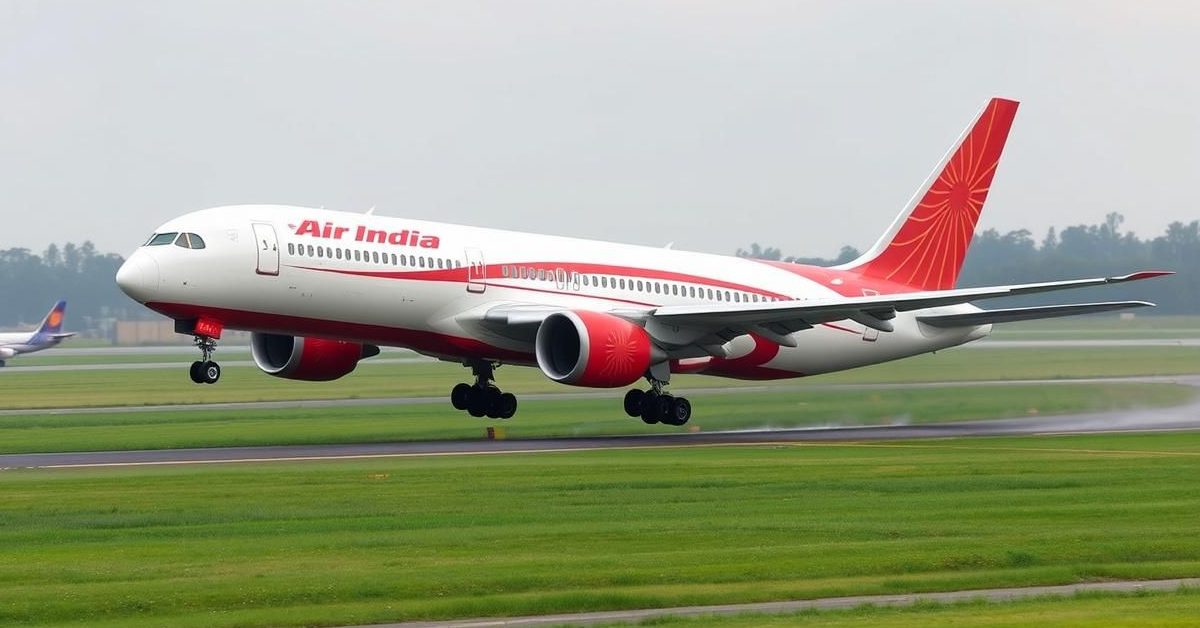The preliminary report into the recent Air India flight AI 171 crash, which caused the worst aviation disaster involving an Indian airline in decades, has offered unusually detailed insights, focusing heavily on the mysterious movement of engine fuel control switches immediately after takeoff.
A Closer Look at the Incident
The flight began with co-pilot Clive Kundar at the controls, while Commander Sumeet Sabharwal monitored the flight. Both pilots had adequate rest and passed mandatory breathalyzer tests. All aircraft maintenance checks were on schedule, and the takeoff was proceeding normally until the plane reached an altitude of approximately 400 feet.
At this critical moment, the Boeing 787-8’s engine fuel control switches transitioned from the ‘RUN’ to the ‘CUTOFF’ position within a single second. This sudden interruption of fuel flow is believed to be a key factor leading to the tragic accident.
The cockpit voice recorder captured a telling exchange: one pilot asked the other why the fuel had been cut off, to which the other pilot denied doing so. The report, however, does not specify the identities of the pilots involved in this exchange.
The Mystery of the Fuel Switches
Engine fuel control switches are crucial components that regulate fuel supply to a plane’s engines. Their design requires deliberate action, featuring protective brackets on either side and a stop-lock mechanism. Pilots must lift the switch before moving it between its ‘RUN’ and ‘CUTOFF’ positions, making accidental movement highly improbable.
Typically, these switches are only used on the ground—to start engines before departure or to shut them down upon arrival at the gate. In-flight manipulation would only be necessary in extreme circumstances, such as an engine failure, significant damage requiring fuel cut-off, or an attempt to safely restart an affected engine.
Adding to the puzzle, investigators found the fuel control switches in the wreckage still in the ‘RUN’ position. This finding seemingly contradicts the recorded transition to ‘CUTOFF’ during the flight, a point that will be central to further investigation.
Prior Warnings and Maintenance
In 2018, the US Federal Aviation Administration (FAA) issued an advisory, known as a Special Airworthiness Information Bulletin (SAIB), concerning the potential disengagement of fuel control switch locking features. This advisory was specifically for 737 fuel switches, which share a similar design module with those found on the 787 aircraft.
However, Air India did not implement the recommended inspection because the SAIB was merely advisory and not mandatory. Maintenance records showed that the cockpit’s throttle control module, which houses these switches, had been replaced in 2019 and 2023. These replacements, however, were not linked to issues with the fuel control switches themselves, and no defects pertaining to the fuel control switch had been reported on the aircraft since 2023.
Emergency Systems Engaged
Following the engine shutdown, two critical emergency power sources were immediately activated. The Ram Air Turbine (RAT) deployed, and the Auxiliary Power Unit (APU) automatically started.
The RAT is a small wind turbine that extends into the airstream to generate power when primary and secondary power sources fail. The APU is a separate turbine engine, usually located in the tail, which provides electrical and pneumatic power to the aircraft’s systems. Their deployment signifies a complete engine shutdown or “flameout” during flight.
Investigation Focus: Pilot Action
The preliminary report notably states that no recommended actions are being issued to B787-8 or GE GEnx-1B engine operators and manufacturers at this stage. This clear indication suggests that investigators do not believe there is an inherent issue with either the aircraft or its engines.
Consequently, the ongoing investigation will likely focus heavily on the actions of the pilots. A final report is expected to be released in about a year, though it could come sooner given the level of detail already provided in this initial report.
- Engine fuel control switches transitioned to ‘CUTOFF’ moments after Air India flight AI 171 took off.
- The switches require deliberate action to move, suggesting accidental manipulation is highly unlikely.
- A cockpit voice recording captured one pilot asking why fuel was cut, while the other denied doing so.
- Emergency power systems engaged, indicating a complete engine shutdown.
- The investigation is now primarily focused on pilot actions, as no issues with the aircraft or engines have been identified.
This detailed preliminary report provides crucial insights into the initial moments of the Air India 171 tragedy, laying the groundwork for a thorough examination of the sequence of events and human factors involved in the coming months.














